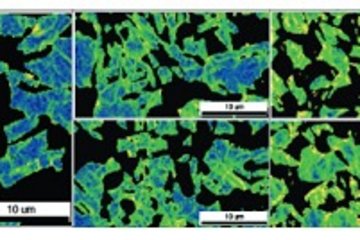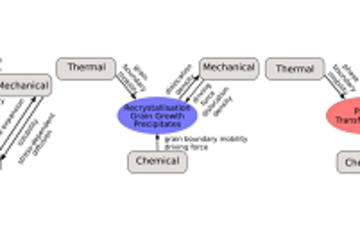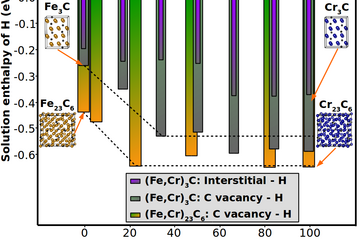All genres
1.
Journal Article
Dislocation mechanisms and mechanical behavior of highly concentrated Al-Mg (6.6 and 9.3 at.%) binary alloys. Intermetallics 187, 108981 (2025)
2.
Journal Article
Dual-scale chemical ordering for cryogenic properties in CoNiV-based alloys. Nature 645 (8080), pp. 385 - 391 (2025)
3.
Journal Article
Two-gigapascal-strong ductile soft magnets. Nature Communications 15 (1), 10119 (2024)
4.
Journal Article
Multifunctional high-entropy materials. Nature Reviews Materials 9 (12), pp. 846 - 865 (2024)
5.
Journal Article
Strong and ductile Resinvar alloys with temperature- and time-independent resistivity. Nature Communications 15 (1), 7199 (2024)
6.
Journal Article
Thermodynamics-Guided High-Throughput Discovery of Eutectic High-Entropy Alloys for Rapid Solidification. Advanced Science 11 (31), 2401559 (2024)
7.
Journal Article
Transition from micro-rod to nano-lamella eutectics and its hardening effect in niobium/silicide in-situ composites. Transactions of Nonferrous Metals Society of China (English Edition) 33 (8), pp. 2406 - 2416 (2023)
8.
Journal Article
Advancing strength and counteracting embrittlement by displacive transformation in heterogeneous high-entropy alloys containing sigma phase. Acta Materialia 246, 118717 (2023)
9.
Journal Article
Impact of interstitial elements on the stacking fault energy of an equiatomic CoCrNi medium entropy alloy: theory and experiments. Science and Technology of Advanced Materials 23 (1), pp. 376 - 392 (2022)
10.
Journal Article
Solidification segregation-driven microstructural evolution of trace yttrium-alloyed TaMoNbZrTiAl refractory high entropy alloys. Materials Characterization 194, 112495 (2022)
11.
Journal Article
Machine learning–enabled high-entropy alloy discovery. Science 378 (6615), pp. 78 - 85 (2022)
12.
Journal Article
A strong ferritic high-resistivity multicomponent alloy with tunable ordered coherent multicomponent nanoprecipitates. Acta Materialia 238, 118209 (2022)
13.
Journal Article
Self-diffusion in carbon-alloyed CoCrFeMnNi high entropy alloys. Acta Materialia 237, 118136 (2022)
14.
Journal Article
Interplay between eutectic and dendritic growths dominated by Si content for Nb–Si–Ti alloys via rapid solidification. Journal of Manufacturing Science and Engineering, Transactions of the ASME 144 (6), 061007 (2022)
15.
Journal Article
2430% Superplastic strain in a eutectic Au–Sn alloy with micrometer-sized grains maintained by spinodal-like decomposition. Acta Materialia 228, 117766 (2022)
16.
Journal Article
Combinatorial development of multicomponent Invar alloys via rapid alloy prototyping. Materialia 21, 101326 (2022)
17.
Journal Article
Understanding the hydrogen effect on pop-in behavior of an equiatomic high-entropy alloy during in-situ nanoindentation. Journal of Materials Science & Technology 98, pp. 118 - 122 (2022)
18.
Journal Article
Strengthening and dynamic recrystallization mediated by Si-alloying in a refractory high entropy alloy. Materials Science and Engineering A: Structural Materials Properties Microstructure and Processing 832, 142480 (2022)
19.
Journal Article
A mechanically strong and ductile soft magnet with extremely low coercivity. Nature 608, pp. 310 - 316 (2022)
20.
Journal Article
Massive interstitial solid solution alloys achieve near-theoretical strength. Nature Communications 13, 1102 (2022)











